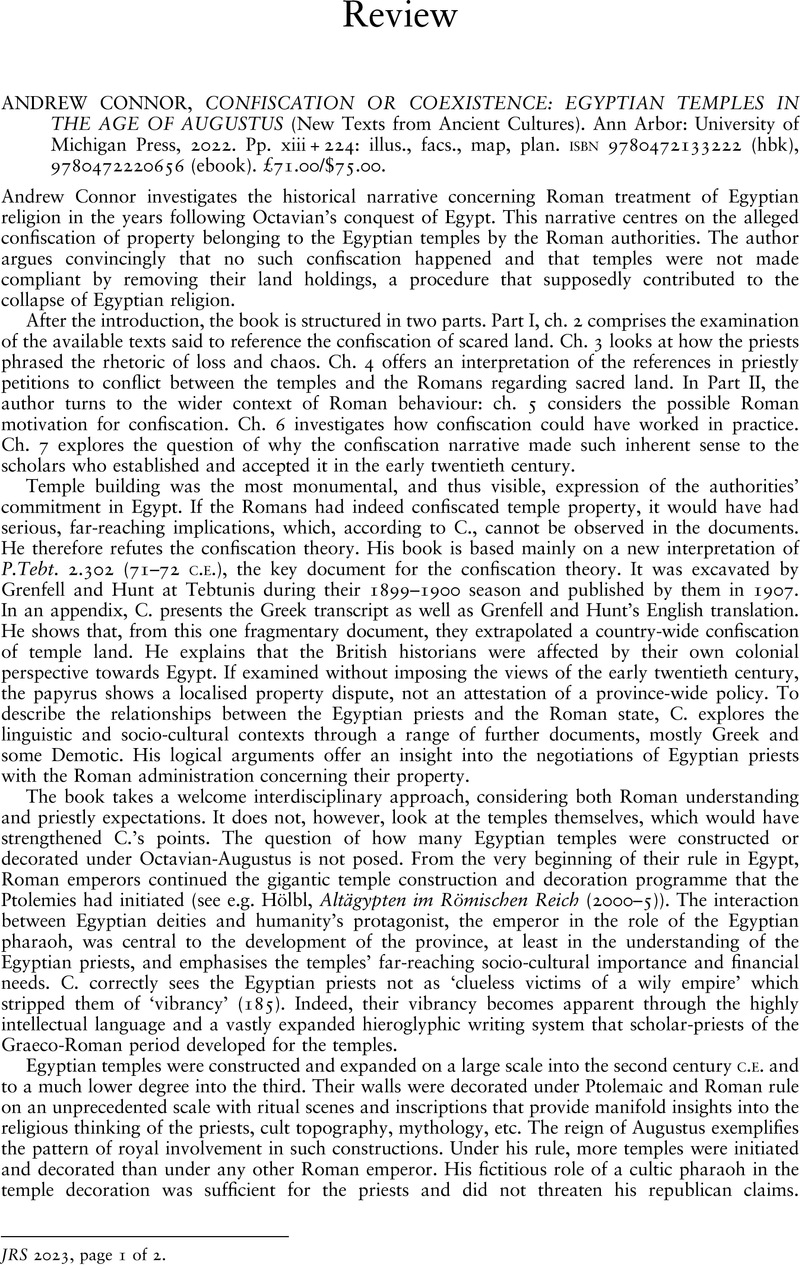No CrossRef data available.
Article contents
ANDREW CONNOR, CONFISCATION OR COEXISTENCE: EGYPTIAN TEMPLES IN THE AGE OF AUGUSTUS (New Texts from Ancient Cultures). Ann Arbor: University of Michigan Press, 2022. Pp. xiii + 224: illus., facs., map, plan. isbn 9780472133222 (hbk), 9780472220656 (ebook). £71.00/$75.00.
Review products
ANDREW CONNOR, CONFISCATION OR COEXISTENCE: EGYPTIAN TEMPLES IN THE AGE OF AUGUSTUS (New Texts from Ancient Cultures). Ann Arbor: University of Michigan Press, 2022. Pp. xiii + 224: illus., facs., map, plan. isbn 9780472133222 (hbk), 9780472220656 (ebook). £71.00/$75.00.
Published online by Cambridge University Press: 05 January 2024
Abstract
An abstract is not available for this content so a preview has been provided. Please use the Get access link above for information on how to access this content.

- Type
- Reviews
- Information
- Copyright
- Copyright © The Author(s), 2024. Published by Cambridge University Press on behalf of The Society for the Promotion of Roman Studies


